The value of social media has been questioned extensively over the past few years, with many skeptical it can really prove beneficial and provide a good return on investment. It’s taken a little time, but most SMBs and large organizations alike now realize that social media is an excellent driver when it comes to traffic and reputation. We’re seeing more and more creative use of social media, better branded accounts and even better, the ability to use social media properly.
By this I mean, using social media as it was meant to be used. As a means for promotion, with a friendly (social) tone, to facilitate great customer service and generate excellent feedback. Of course, some companies still struggle with getting it right and for the most part, this is due to a lack of time, resources and the understanding of just how it can benefit a business.
With this in mind, how is it possible to prove ROI to clients in order to convince them that it’s worth the time and effort?
Recent Studies
A study carried out last year by the Internet Advertising Bureau UK (IAB UK) found that social media is effective “at driving a brand sentiment” and that it further:
- enhances engagement
- increases customer loyalty
- generates a potential ROI of more than 3:1
The research took over 4500 quantitative survey responses, 800 research panel interviews and the social media pages for three leading brands to carry out the study.
It was found that of those consumers who connected with a brand via social, 4 out of 5 were more likely to buy than if they connected via other means. 83% also said that they would try a product after being exposed to the brand on social media and of the three brands that were used in the study, all of them experienced an “uplift in sentiment after implementing their social media campaigns.”
The brands studied were:
- Heinz
- Tea company Twinings
- Kettle (snack food company producing chips etc.)
Heinz found that brand sentiment rose by 22%, Twinings:19% and Kettle: 17%.
According to the study, this meant that for every £1 GBP ($1.6) spent on social media, the return could be as much as £3.34 GBP ($5.45), effectively tripling the ROI. Further to this, it was also found that those brands that posted regularly on social media, especially with regard to new products, discovered that customers were significantly more likely to trial such products.
However, another study which looked at Pepsi’s social campaign found that the drinks company lost 2.6% of the US market during the campaign. This looked at tweets, shares, likes and other social signals and according to Brian Urbick of the Consumer Knowledge Center, this means that it’s necessary to look at more than ‘surface metrics’ and that marketers should use various tools to study the effectiveness of a campaign.
Using Google Analytics
Many businesses already use Google Analytics for measuring activity on the company website and this can be used for social too. It can be used as a standalone tool, or alongside other tools that we will discuss later on. You can use Analytics for simply measuring the amount of social traffic, or you can use it to prove ROI using the Conversions reports.
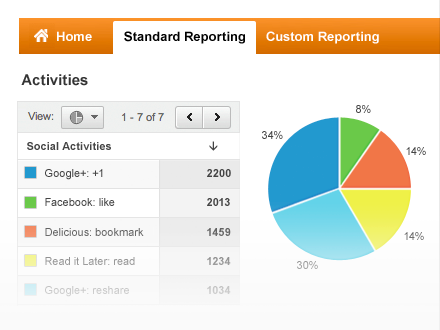
In order to use Conversions reports in Analytics, it’s first necessary to set up goals and e-commerce tracking in order to gain insight into the monetary value of social activity.
According to Analytics:
The reports break out the contribution of social as being the last referring source of your customer e.g. they came to your site directly from a social site, and can also break out the instances where a social site was involved further up in the conversion chain.
Setting up Goals
In Analytics, choose the domain that you would like to work with and then go to the Admin tab; you will see that there is an option for setting up goals.

Next, it’s a case of choosing what kind of goal you would like to set up:
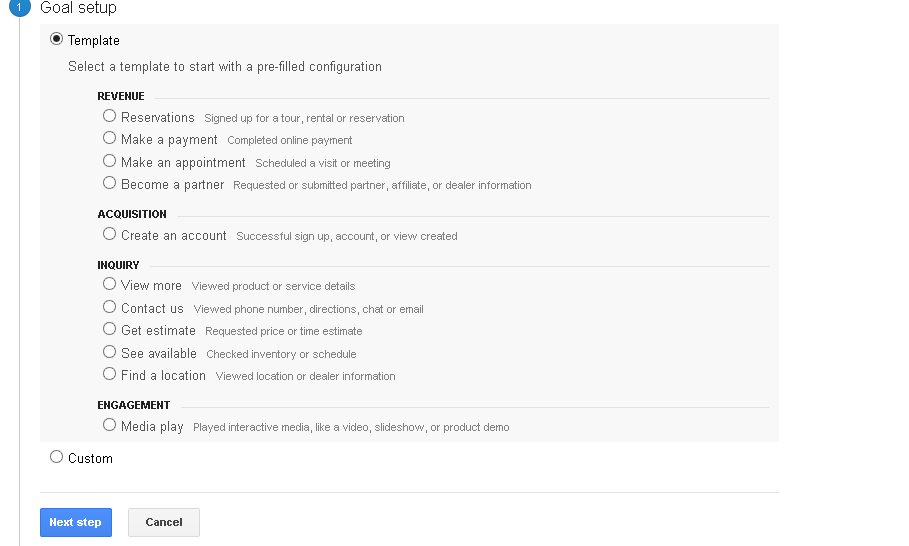
As you can see, it’s possible to set up a goal for numerous different things and you can also set up custom goals depending on what you want to measure. Google Analytics Premium gives a lot more options for setting up goals and measuring effectiveness, but it does cost $150,000 per year.
Once you’ve chosen the goal that you want to set up, give it a name if necessary and choose what you want to measure.
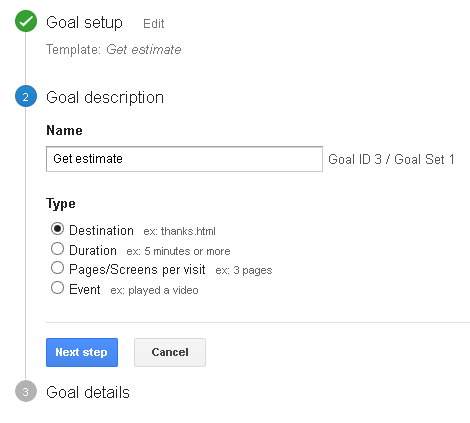
As you can see, there are a few choices, so if you choose get estimate as I have, then you may want to set up the destination page as being a thank you page so that it’s clear that the goal has been met and the visitor has gone through the process. You can set up as many goals as you need and then use Analytics to see conversion rates, sales funnel, the value of each completed goal and so on.
For more information around social and GA, have a look at the video below from the Analytics team.
Justin Cutroni & Benjamin Mangold: Measuring Social Media
Other Measurement Resources
Google Analytics is a great tool and should be used for all site analysis anyway. However, it’s not the only tool out there and in order to get a clear, all-round picture of social activity, it’s necessary to use more than one resource. Knowledge is power and in this case, it can be powerful enough to drive traffic and conversions to your site effectively.
The major social networks have their own resources for doing this, such as:
- Facebook Insights
- Twitter Ads
- Pinterest Analytics
- LinkedIn (found in the ‘Analytics’ tab of your Company page)
If you’re advertising, then these are especially useful, but even if you’re using social media organically they are useful to see which posts are being engaged with and when.
For example, Facebook’s new Insights allow you to see which posts get the most attention, but there’s also a lot of other useful information which can really help you drill down what content your followers enjoy the most. This allows you to fine-tune the process and gain more ROI, as you will be able to target your audience even more effectively.
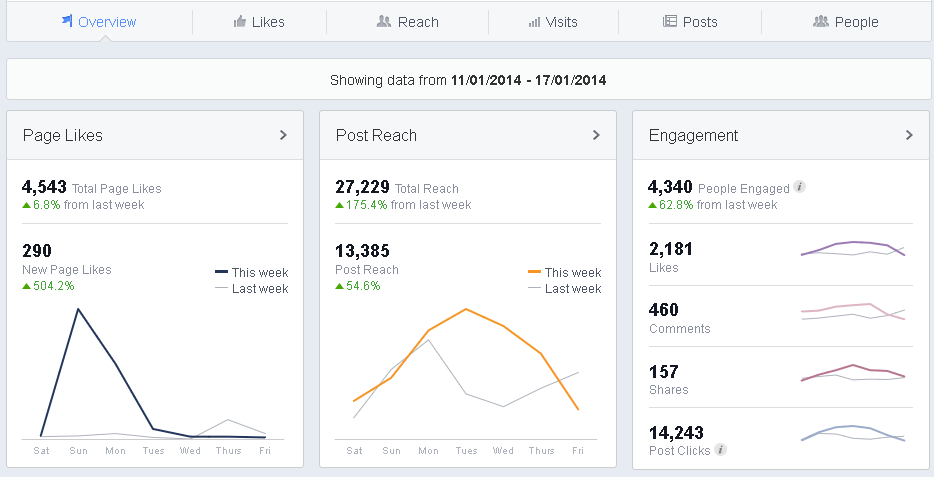
As you can see, the Insights dashboard gives a general overview on what’s happening on your Facebook Page. You can see if engagement has gone up or down, look at the total reach and more. You can also choose the tabs across the top to look at demographics, what posts are doing the best, organic reach vs paid and more.
Again, this can really help drill down your audience, what they like and how to plan content for the future.
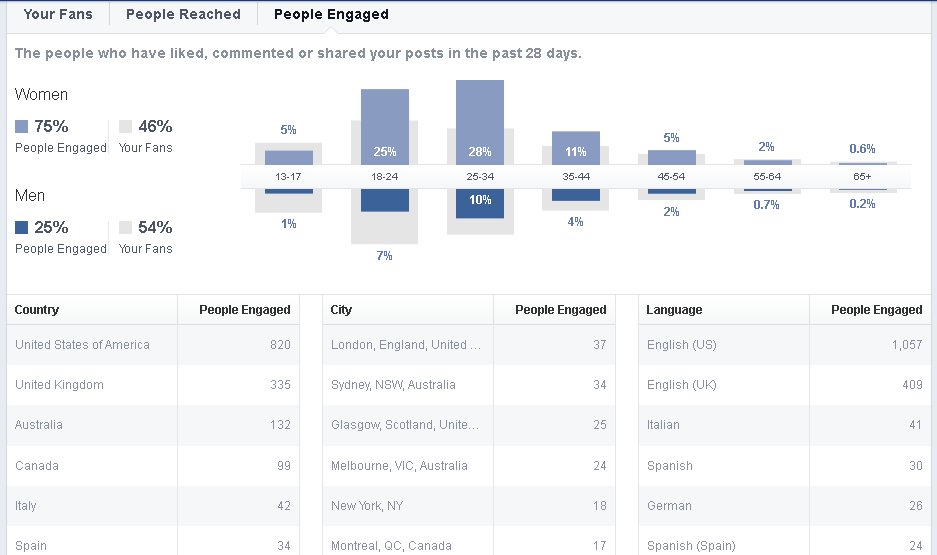
Professional Tools
How social is measured is different to how marketers might measure other forms of advertising. Over the course of the past few years, what’s measured has changed according to the available tools and the more that marketers have become accustomed to working with social.
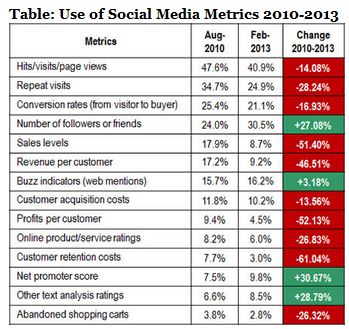
As you can see, whilst many started out using traditional ROI metrics, by 2013 only 9% of them were. This is because social can’t be measured in the same way using standard transactional formulas such as Return on Investment (%) = (Net profit / Marketing Costs) × 100, which is a traditional way for marketers to measure ROI. Social is measured more effectively by using metrics such as audience reach, levels of engagement and sentiment, the latter of which we discussed earlier.
This has led to a bewildering amount of social tools appearing on the market, some of which are good and some of which have little use.
TweetReach is a great tool for measuring how much exposure your Twitter activity is receiving and allows you to see how many accounts have been reached, the quality of them and much more.
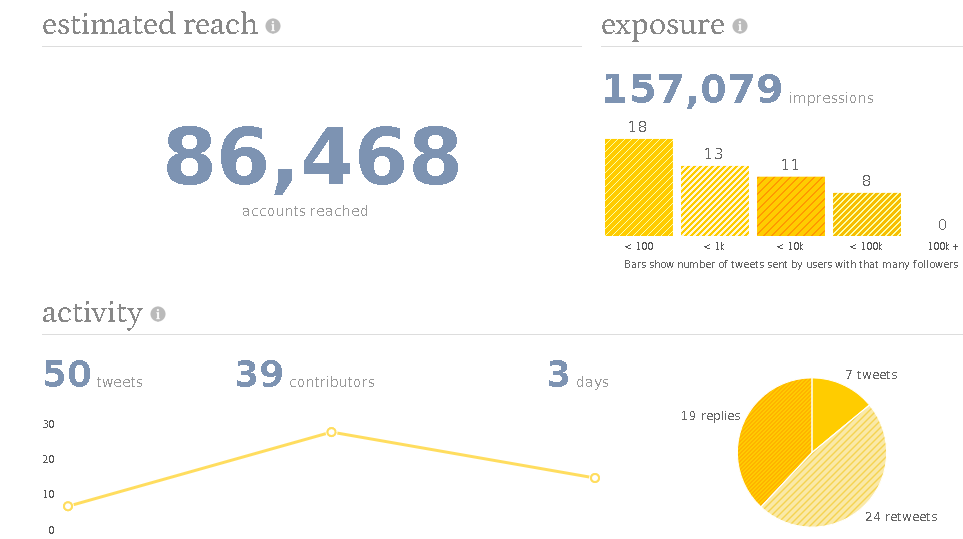
It’s simple to find out who is retweeting, the authority they have and what tweets are receiving the most engagement, retweets, replies and so on.
Social Mention allows you to keep a tab on who’s saying what about your brand across all of the social networks and is a useful tool for reputation management. Any successful social campaign relies on gaining a strong brand rep, so whilst it may not measure ROI as such, it’s a good tool to have in your social media marketing arsenal.
Hootsuite is a popular tool for managing several accounts at the same time and now includes its own analytical tools for Google, Facebook, Twitter and so on.
Hootsuite also allows you to generate reports that can be shared across all teams and can be generated daily, weekly, monthly, or whenever you need them. This allows you to schedule, choose custom modules for different sites, create branded reports for clients and is probably the most popular management tool out there.
There are host of other professional tools, including:
And many more!
What it comes down to is sound planning and as an ongoing plan, it’s necessary to really study what your audience are engaging with and why. With the use of analytics, from a variety of sources, you can calculate ROI by ensuring that you set up goals and adjust according to engagement and conversion rates.
There are a few places around the web that offer up formulae for social media ROI, for example take a look at these 14 here or try your hand at working it out using the Dragon Search online social media ROI calculator.
It’s still not an exact science but there is definitely a return to be had when using social media for marketing. For many web professionals, the most difficult part is convincing clients (especially small businesses) about the ability of social to really boost business. It’s very provable I’ve found, but this is often only trusted by clients once they have actually seen it work on their site, rather than just in theory.
Kerry is a prolific technology writer, covering a range of subjects from design & development, SEO & social, to corporate tech & gadgets. Co-author of SitePoint’s Jump Start HTML5, Kerry also heads up digital content agency markITwrite and is an all-round geek.


